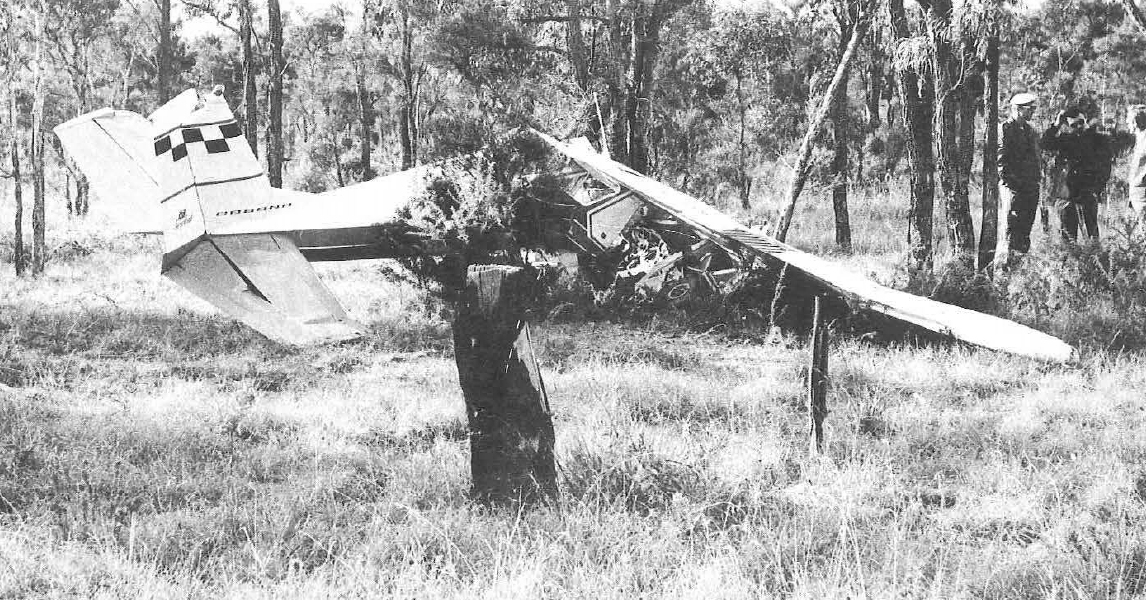
ASN Wikibase Occurrence # 213764
This information is added by users of ASN. Neither ASN nor the Flight Safety Foundation are responsible for the completeness or correctness of this information.
If you feel this information is incomplete or incorrect, you can submit corrected information.
| Date: | Sunday 9 July 1972 |
| Time: | 16:43 |
| Type: |  Cessna A150K Aerobat |
| Owner/operator: | Navair Flying School & Charter Services Pty Ltd |
| Registration: | VH-RDH |
| MSN: | |
| Fatalities: | Fatalities: 1 / Occupants: 1 |
| Aircraft damage: | Destroyed |
| Category: | Accident |
| Location: | Holsworthy, NSW -
 Australia Australia
|
| Phase: | Initial climb |
| Nature: | Private |
| Departure airport: | Holsworthy, NSW |
| Holsworthy, NSW | |
| Investigating agency: | BASI |
| Confidence Rating: |
On the day of the accident spot landing competitions were carried out from the Aero Paddock Airstrip by a social group of pilots. Mr. Paul was a qualified flying instructor and was responsible for supervision of the flying activities for the day. After the competitions were concluded he indicated to a small group of persons that he would make a demonstration flight in VH-RDH which was the only aircraft at the airstrip approved for acrobatic flight. He stated, however, that he would not operate the aircraft acrobatically. The airstrip was aligned east/west and the surface wind was from the west at 8 knots. An into wind take-off was made in a manner similar to that which would be expected for short field operations but the flaps were extended to about 30 degrees whereas 10 degrees of flap extension Is recommended by the aircraft manufacturer as the maximum for short field take-offs. The aircraft climbed steeply ahead to a height of about 200 feet, the flaps were retracted, and it then turned to the right. As the turn continued the aircraft descended and made a very low run over the airstrip area in an easterly direction, at a speed of approximately 100 knots. When it was near the eastern end of the airstrip the aircraft climbed steeply to a height of about 300 feet and the speed decreased to at least the stalling speed of the aircraft in its particular configuration (i.e. 43 knots). The nose pitched down, the port wing dropped, a turn to the left commenced and the engine noise ceased. As the aircraft descended the nose continued to lower, the angle of bank increased and it is apparent that the aircraft had entered an unstabilized spinning mode. Before recovery could be effective the port wing struck a tree some 20 feet above ground level and the aircraft impacted the ground at a speed of approximately 100 knots still rotating to the left and in a steep nose down attitude.
Accident investigation:
 |
|
Sources:
https://www.atsb.gov.au/publications/investigation_reports/1972/aair/aair197201263/
https://www.atsb.gov.au/media/24758/197201263.pdf
Images:

Photo: BASI
Revision history:
| Date/time | Contributor | Updates |
|---|---|---|
| 29-Jul-2018 12:52 | Pineapple | Added |
| 16-Nov-2018 19:56 | harro | Updated [Aircraft type, Photo] |
Corrections or additions? ... Edit this accident description
The Aviation Safety Network is an exclusive service provided by:


 ©2024 Flight Safety Foundation
©2024 Flight Safety Foundation